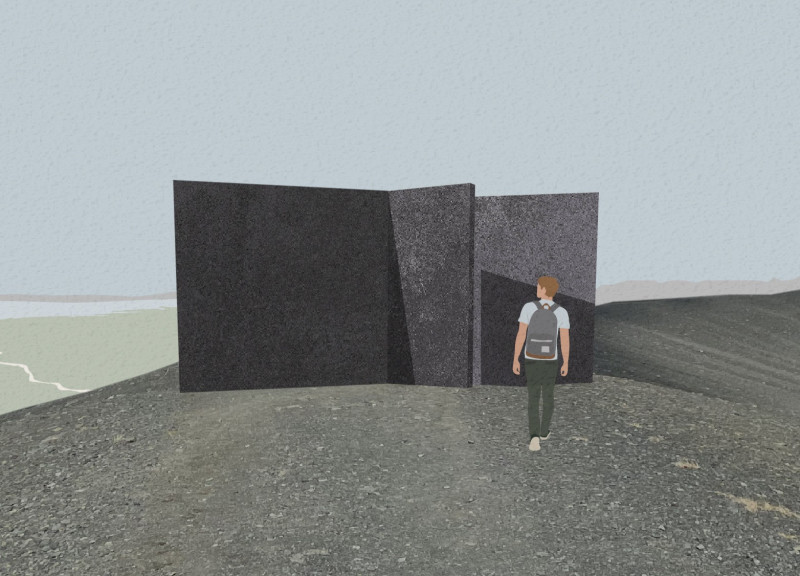5 key facts about this project
Hverfjall Point is located near Myvatn Lake and the Dimmuborgir rock formations in Iceland. The design aims to create an experience that encourages visitors to explore and engage with the surrounding volcanic landscape. The concept focuses on guiding movement through a series of varying spatial conditions, transitioning between moments of closeness and openness.
Conceptual Framework
Large-scale steel walls serve a critical role in the design. These walls invite curiosity and allow visitors to interact with the space from different angles. Their presence creates an environment that stimulates engagement and enhances the visitor's relationship with the landscape.
Spatial Experience
Visitors move through a sequence of dark, narrow passages defined by tall walls, which eventually lead to more open areas. These transitions are carefully planned to frame views of the nearby scenery, enriching the experience as visitors adjust their perspectives. Each turn introduces new elements of the landscape, fostering a sense of discovery and connection to the unique setting.
Landscape Integration
The design incorporates a switchback layout that reflects the surrounding topography. This allows for both ascending and descending movements, encouraging interaction with the natural landforms. The ground level is adjusted, with elevations raised near the lava fields and lowered toward the lake. This thoughtful manipulation emphasizes the relationship between the architecture and its environment.
Design Elements
A distinct contrast exists throughout the project, balancing light and dark spaces as well as open and confined areas. These varying experiences create a hierarchy within the landscape, making it easy for visitors to connect with their surroundings. Hverfjall Point integrates naturally with the environment, showcasing how architecture can enhance the appreciation of nature.
The carefully framed views draw attention to the beauty of Iceland's geological features, inviting visitors to immerse themselves in the landscape while navigating through diverse spatial experiences.



















































